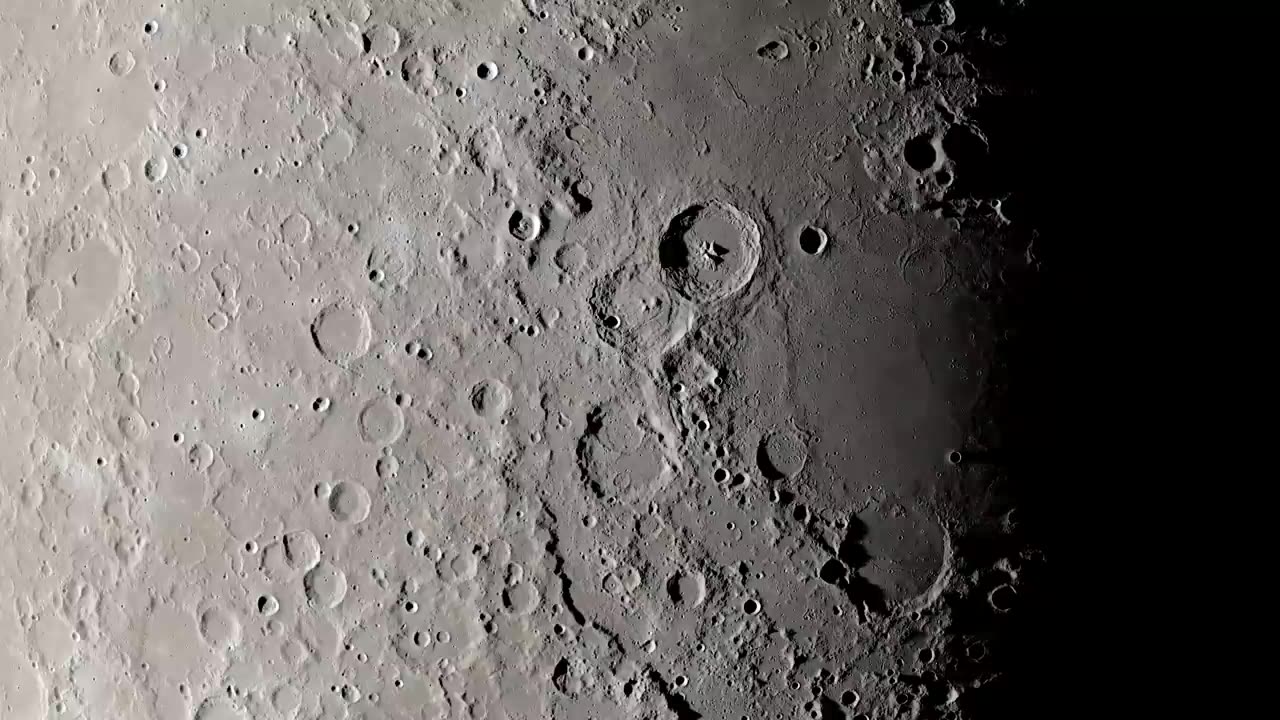Premium Only Content

Clair de Lune 4K Version - Moon Images from NASA's Lunar Reconnaissance Orbiter
This visualization uses a digital 3D model of the Moon built from global elevation maps and image mosaics by NASA's Lunar Reconnaissance Orbiter mission. It was created to accompany a performance of Claude Debussy's Clair de Lune by the National Symphony Orchestra Pops, led by conductor Emil de Cou, at the Kennedy Center for the Performing Arts in Washington, DC, on June 1 and 2, 2018, as part of a celebration of NASA's 60th anniversary. Clair de Lune (moonlight in French) was published in 1905, as the third of four movements in the composer's Suite Bergamasque, and unlike the other parts of this work, Clair is quiet, contemplative, and slightly melancholy, evoking the feeling of a solitary walk through a moonlit garden. The visuals were composed like a nature documentary, with clean cuts and a mostly stationary virtual camera. The viThis visualization uses a digital 3D model of the Moon built from global elevation maps and image mosaics by NASA's Lunar Reconnaissance Orbiter mission. It was created to accompany a performance of Claude Debussy's Clair de Lune by the National Symphony Orchestra Pops, led by conductor Emil de Cou, at the Kennedy Center for the Performing Arts in Washington, DC, on June 1 and 2, 2018, as part of a celebration of NASA's 60th anniversary. Clair de Lune (moonlight in French) was published in 1905, as the third of four movements in the composer's Suite Bergamasque, and unlike the other parts of this work, Clair is quiet, contemplative, and slightly melancholy, evoking the feeling of a solitary walk through a moonlit garden. The visuals were composed like a nature documentary, with clean cuts and a mostly stationary virtual camera. The viewer follows the Sun throughout a lunar day, seeing sunrises and then sunsets over prominent features on the Moon. The sprawling ray system surrounding Copernicus crater, for example, is revealed beneath receding shadows at sunrise and later slips back into darkness as night encroaches. ewer follows the Sun throughout a lunar day, seeing sunrises and then sunsets over prominent features on the Moon. The sprawling ray system surrounding Copernicus crater, for example, is revealed beneath receding shadows at sunrise and later slips back into darkness as night encroaches.
-
 9:43:32
9:43:32
RalliedLIVE
13 hours ago $7.95 earned10 WINS WITH THE SHOTTY BOYS
105K7 -
 1:35:43
1:35:43
Badlands Media
17 hours agoAltered State S3 Ep. 38: Biolabs, Bitcoin & the Epstein Data Vault
63.8K14 -
 DVR
DVR
SpartakusLIVE
5 hours agoLAST Stream Until NEXT WEEK || Going to Florida to hang out w/ a SPECIAL Gaming Buddy
38.1K -
 10:19
10:19
MattMorseTV
1 day ago $11.78 earnedTrump just went SCORCHED EARTH.
75.1K65 -
 1:36:49
1:36:49
RiftTV
8 hours agoHow Much is the Government SPYING on You and STEALING Your DATA?! | Almost Serious | Guest: Matt Kim
37.4K4 -
 1:31:26
1:31:26
Glenn Greenwald
9 hours agoAaron Maté on More Russiagate Fallout, Protests in Ukraine, and Israel's Strikes on Syria With Special Guests John Solomon, Marta Havryshko, and Joshua Landis | SYSTEM UPDATE #491
122K46 -
 1:55:43
1:55:43
Melonie Mac
8 hours agoGo Boom Live Ep 56!
36.2K7 -
 1:55:44
1:55:44
Joker Effect
5 hours agoWHY AREN'T YOU DOING THE RUMBLE CREATOR PROGRAM...? IT BEGINS HERE. Wake up!
11.8K2 -
 4:03:40
4:03:40
Jorba4
9 hours ago🔴Live-Jorba4- Rainbow 6 Siege w/ XxXAztecWarrior and Zerrick Gaming
6.76K -
 1:33:40
1:33:40
Mally_Mouse
15 hours agoLet's Hang!! - P.O. Box & Chill - WE HIT 10,000!!!
25.7K3